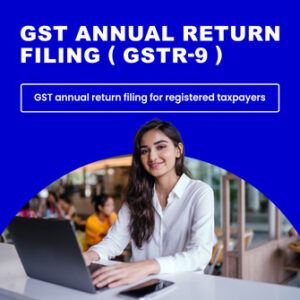Description
Streamlined Process for GST eInvoice
GST eInvoice is an electronic invoicing system established under GST legislation, analogous to the e-way bill system utilised by GST-registered businesses to transport goods. This mandate requires specific GST-registered entities to generate GST eInvoices for their Business-to-Business (B2B) transactions to ensure compliance and standardisation. Effective August 1, 2023, the e-invoicing mandate has been broadened to encompass all GST-registered entities whose aggregate turnover exceeds five crores in any fiscal year from 2017-18 onwards, as determined by their PAN.
What is GST eInvoice?
GST eInvoice, or electronic invoicing, refers to the system where Business-to-Business (B2B) invoices are electronically authenticated via a specified portal. This process entails electronically submitting invoices for validation.
Once verified, the Invoice Registration Portal (IRP) assigns each invoice a unique invoice reference number (IRN). The system also endows each invoice with digital signatures and embeds a QR code. This comprehensive process is called e-invoicing within the GST (Goods and Services Tax) framework.
Eligibility Criteria for GST eInvoice Implementation
The GST eInvoice requirement encompasses all entities registered within the Goods and Services Tax (GST) framework that generate Business-to-Business (B2B) invoices.
GST eInvoice Structure
The eInvoice system under GST mandates using Form GST INV-1, setting a standardised schema for electronic invoice generation. This form outlines the required format or structure for capturing and reporting invoice details electronically. When submitting these details to the Invoice Registration Portal (IRP), they must be formatted in JSON.
The format is divided into eight key sections, each designed to capture specific aspects of the transaction:
Within these categories, specific details such as item descriptions, document totals, and additional information like export port codes or product batch details must be meticulously recorded.
It’s crucial to recognise that while certain fields are mandatory for all eInvoices submitted to the IRP, others may be optional, contingent on the transaction type and business requirements. This structured format ensures that electronic invoices are consistent, detailed, and fully compliant with GST regulations.
Essential Components Required on eInvoices
For eInvoices to meet compliance standards and ensure precise reporting, incorporating specific mandatory details is crucial. These indispensable elements include:
GST eInvoice Generation and Integration with GST Returns
The GST eInvoice system streamlines the invoicing process through a well-defined workflow, ensuring compliance and efficiency. Here’s a breakdown of the steps involved:
GST eInvoice Generation Process:
Integration with GST Returns:
Integrating eInvoices with GST returns involves a cohesive process to ensure accurate and efficient tax reporting:
Amendment or Cancellation of eInvoice
In the GST eInvoice framework, making changes or cancelling eInvoices involves adhering to certain guidelines:
Exemptions from the eInvoicing
As mentioned above, according to their PAN records, e-invoicing has been a requisite for all registered businesses with an aggregate turnover exceeding five crores in any fiscal year since 2017-18, as per the guidelines established.
Businesses not meeting this turnover threshold are exempt from the eInvoicing mandate.




Who is eligible for E-invoice?
In which case e-invoice is mandatory?
Can an e-invoice be cancelled partially/fully?
Can an e-invoice be canceled be fully or partially?
How can an e-invoice be amended?
Is bulk loading of invoices possible?
For how long is data available on Government Portal?
What is e-invoicing under the GST tax law Act?
Is e-invoicing mandatory?
Is QR code required mandatorily for e-invoicing?
What is the turnover requirement limit for e-invoicing?
Is it possible to issue an e-invoice after the invoice date?
What is a QR code?
What happens when an e-invoice is not generated?
Can an e-invoice be exported?
Is an e-invoice necessary for the delivery challan?
What is an e-invoicing schema?
What are the advantages of e-invoicing?
What is e-invoicing?
Will the e-invoice format be similar for all taxpayers?
What is the maximum number of items supported by an e-invoice?